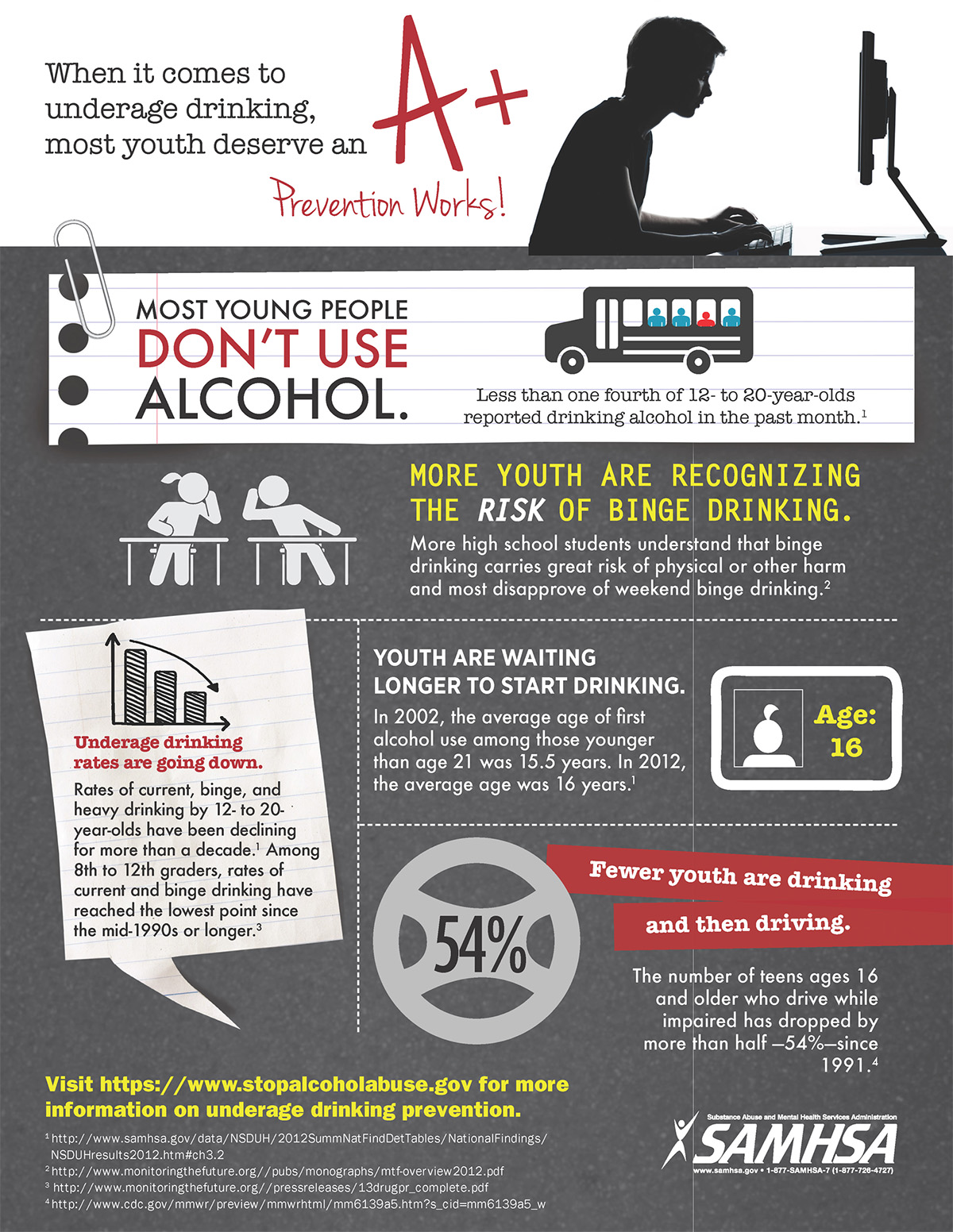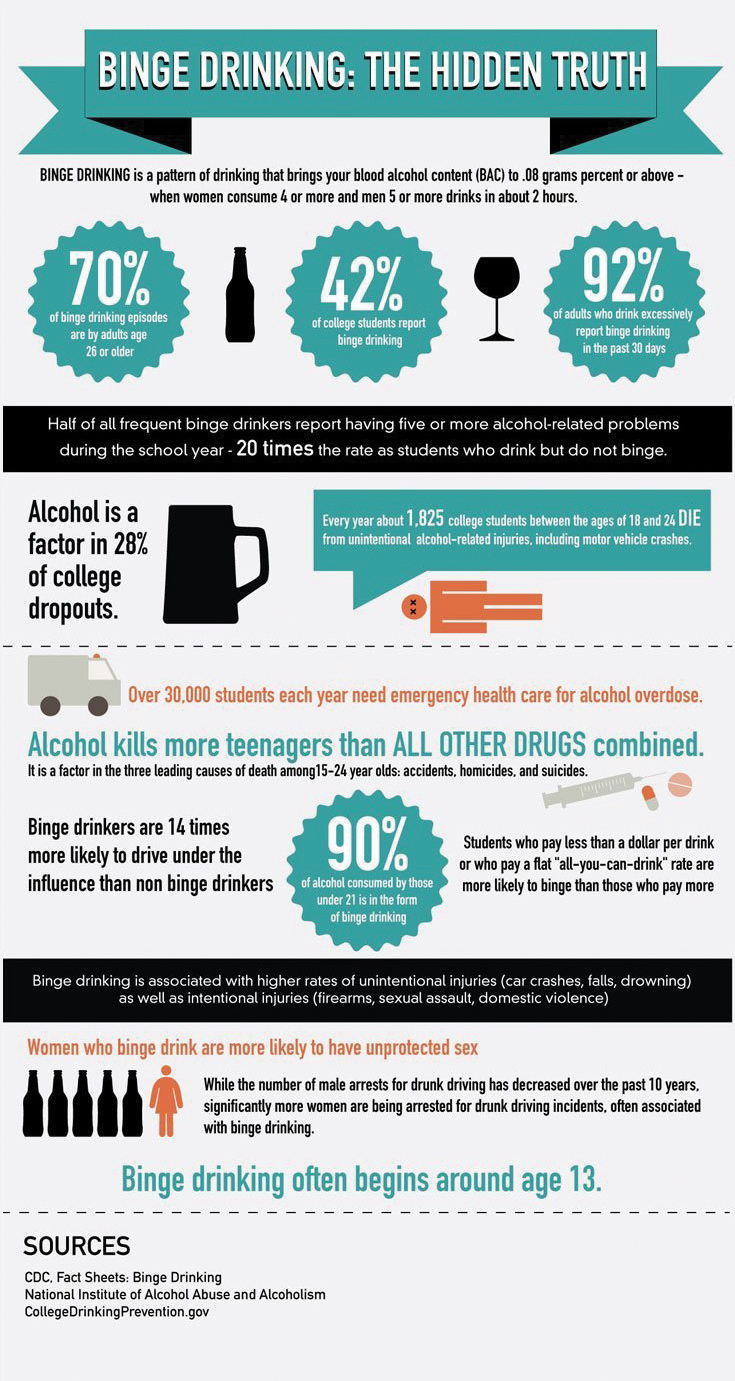Despite the law, the statistics, and the science, some people still think teen drinking is not a serious problem. Here are some of the more common questions and assertions neighbors and friends may ask about teen drinking — and how you can respond. Please share.
Underage Drinking

If this were true, teen drinking would have gone up after adoption of the legal drinking age. It did not — teen drinking has gone done 24% since the legal drinking age was established in 1984. And here is another advantage of the law: the drinking habits of 18-year-olds have a big influence on younger teens (13-17). Statistics show a big decline in drinking by 10th and 8th graders, too, since the drinking age was instituted.
Actually, most teens don’t drink. This includes 58% of 12th graders, 72% of 10th graders, and 95% of 8th graders. So, if fitting in is the goal, not drinking is the way to go.
Parents don’t have to allow their children to drink while still in the home to teach them responsible drinking. A recent U.S. study shows that when parents don’t allow their teens to drink alcohol in high school, their children drink less in college and have fewer negative alcohol-related consequences than do kids of more permissive parents.
Again, if this were true, binge drinking would be less common in places where the legal drinking age was 18 or 19, but that’s not the case. A recent European study tested the theory that parents can teach responsible drinking by letting their teenagers have alcohol at home. In a study of 428 Dutch families, researchers found that the more teenagers were allowed to drink at home, the more they drank outside of home as well. What’s more, teens who drank under their parents’ watch or on their own had an elevated risk of developing alcohol-related problems, such as trouble with schoolwork, missed school days, and getting into fights. Conversely, binge drinking by 12th graders has dropped 13% since 21 was adopted as the national legal drinking age.
Letting other teens drink in your house undermines other parents, and in many states, it violates the law. Drunk driving isn’t the only danger associated with teen drinking, and you can’t guarantee that your teen guests won’t drive after they leave your house. Offer non-alcoholic choices rather than another drinking venue.
Unfortunately, you can’t always control what happens, even if you are present. There are too many real stories about teens who were injured from drinking under adult supervision. This includes instances of serious alcohol poisoning, sometimes resulting in death. Giving permission to drink at home also may be interpreted to mean that you approve if your kids drink with friends when you’re not around.
Actually, they do. European teenagers drink more alcohol more often than their American counterparts and get drunk more frequently. The concept that European teens do not have drinking problems is a myth.
Studies have shown that parents have a significant influence on youth decisions about alcohol consumption. Around 80% of young teens feel that parents should have a say in whether their kids drink alcohol, and a parent’s attitudes about alcohol use continue to influence drinking decisions even after a teen has left for college.
Ages of “initiation” vary. You can work at 14, vote at 18, and drink at 21, but you can’t run for Congress until you’re 25. Researchers who have evaluated the data say the minimum legal drinking age delays the onset of alcohol use, reduces drinking and driving, and reduces teen traffic fatalities.
The Hidden Truth
Binge Drinking
According to the CDC, excessive alcohol use is a term used to describe four ways that people drink alcohol that can negatively impact health:
- Binge drinking (5+ drinks for men; 4+ drinks for women)
- Heavy drinking (15 drinks for men; 8+ drinks for women)
- Drinking during pregnancy (any amount)
- Drinking under 21 years of age (any amount)
Excessive drinking can lead to many negative results, including:
- 88,000 deaths per year
- Violence, injuries, and motor vehicle crashes
- Risky sexual behaviors, unintended pregnancies, miscarriages, and stillbirths
- Chronic conditions such as cancer, heart disease, and high blood pressure
- $249 billion in economic costs
Many statistics highlight the severity of U.S. binge drinking:
- Over 90% of excessive drinkers binge drink.
- 1 in 6 – more than 38 million U.S. adults – binge drink.
- Binge drinkers do so about 4 times a month.
- Binge drinkers average 8 drinks per binge.
- Most people who binge drink are not alcohol dependent nor alcoholics.
Follow these four tips to ensure you stay safe while drinking:
- No one should begin drinking nor drink more frequently, based on potential health detriments.
- Women: Limit yourself to 1 or less drinks per day.
- Men: Limit yourself to 2 or less drinks per day.
- Don’t drink at all if you are under age 21, pregnant or may be pregnant, or have health problems that could be exacerbated by drinking
For more information, visit www.cdc.gov/alcohol.
Local & National Resources
We have gathered a number of resources to help you start conversations and find information.
- SAMHSA National Helpline
- Rethinking Drinking
- CDC Excessive Drinking Facts
- How to Stop Binge Drinking
- NIAAA – Binge Drinking
- 7 Sneaky Signs You Drink Too Much

